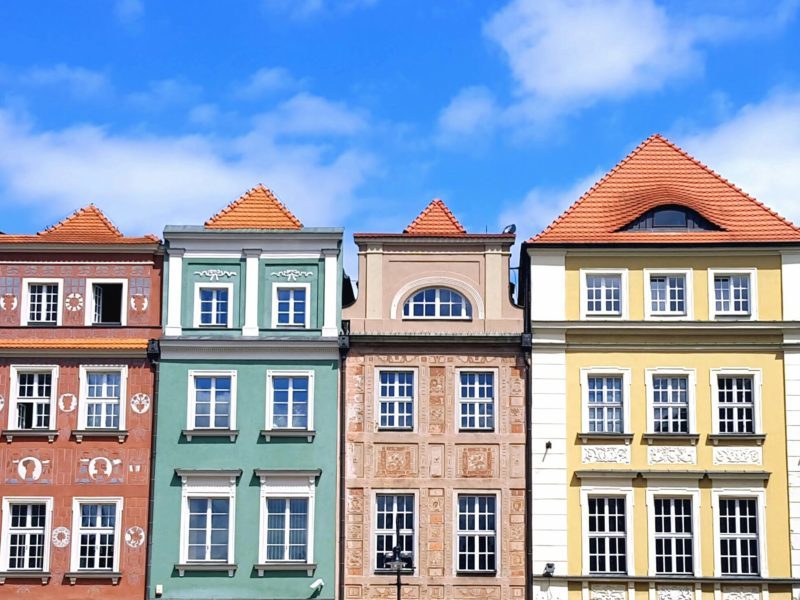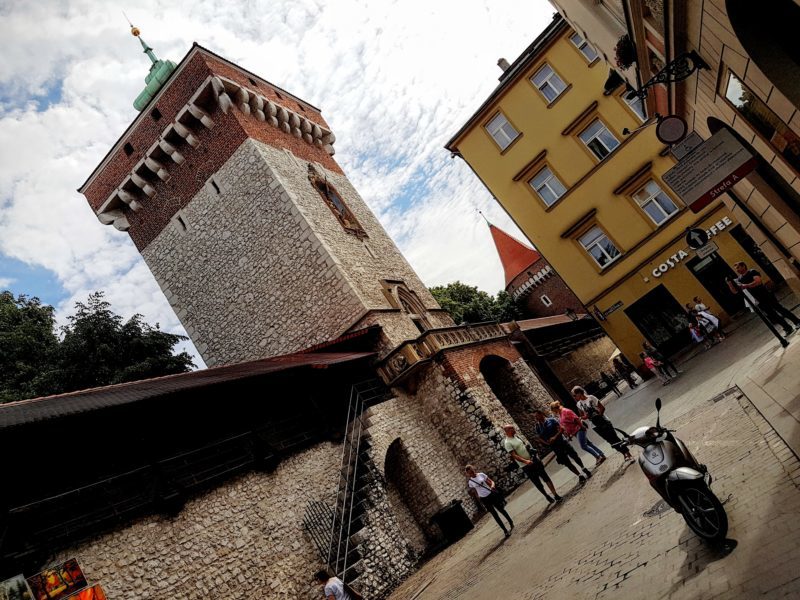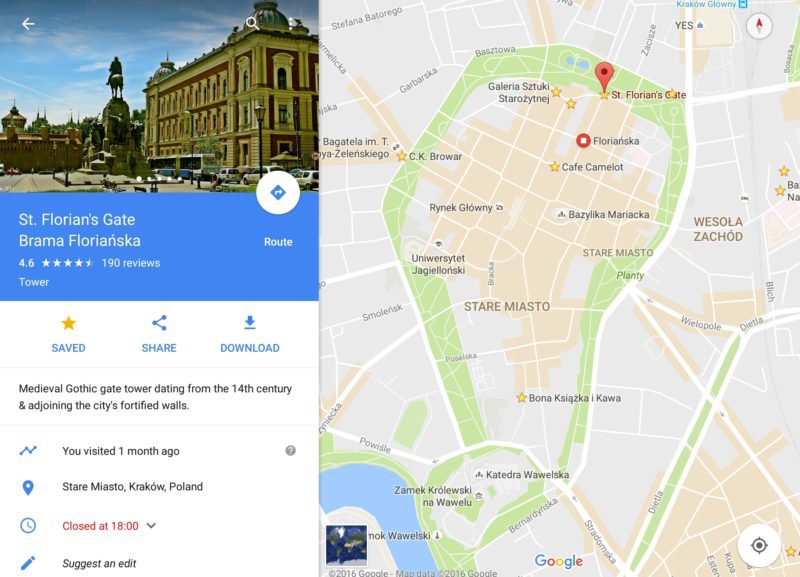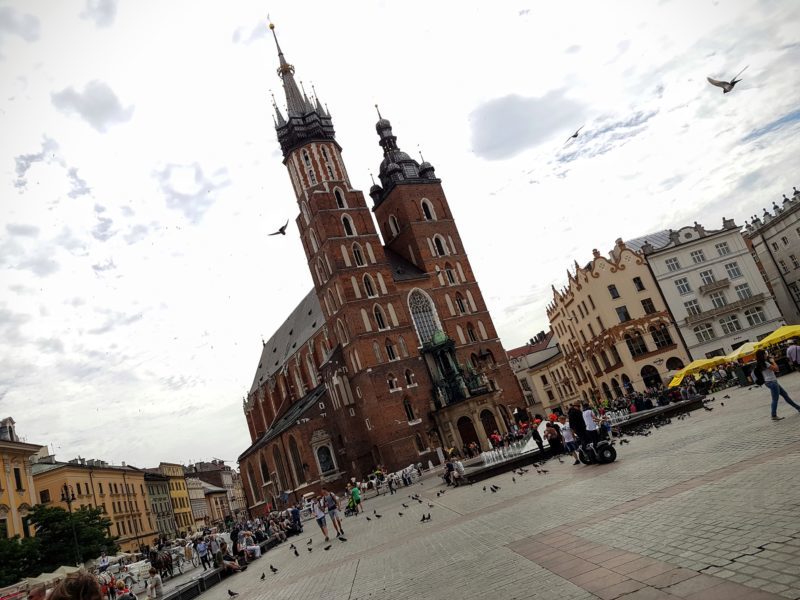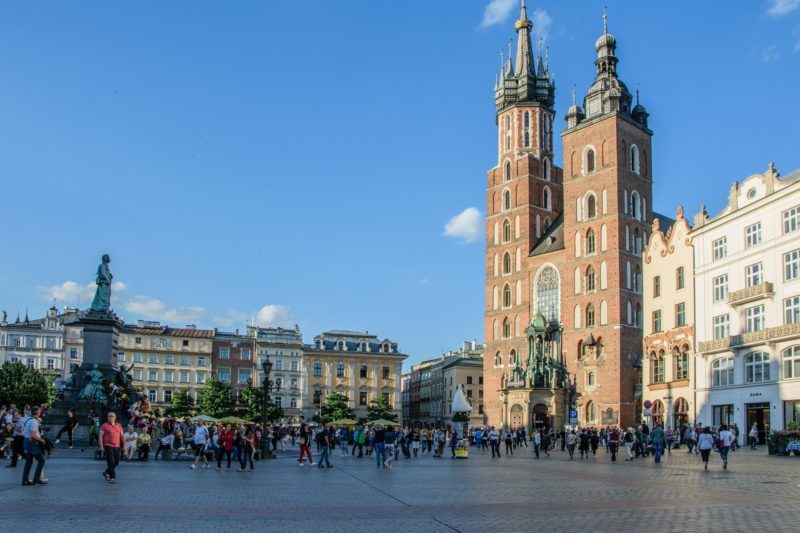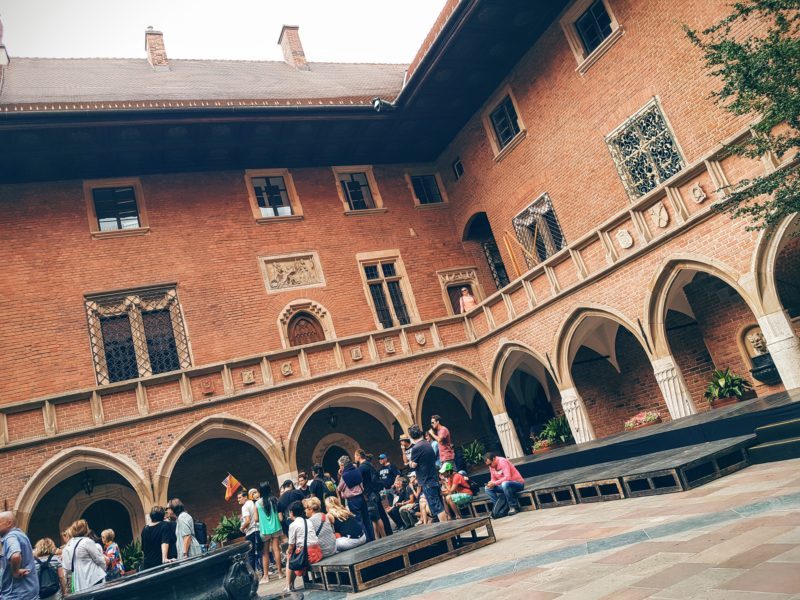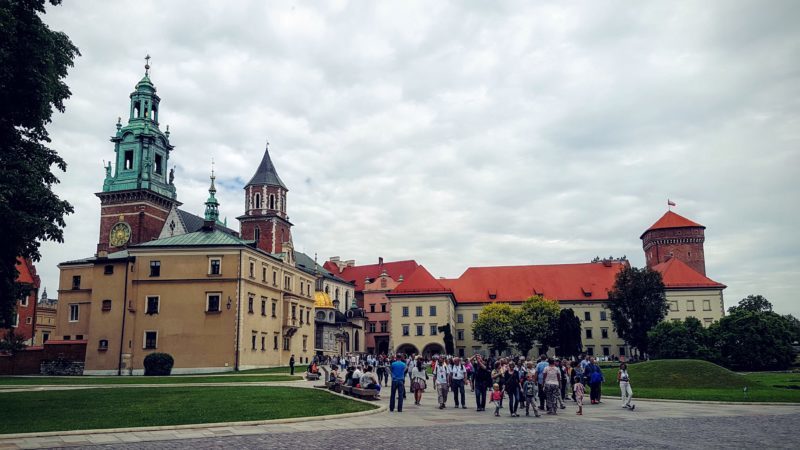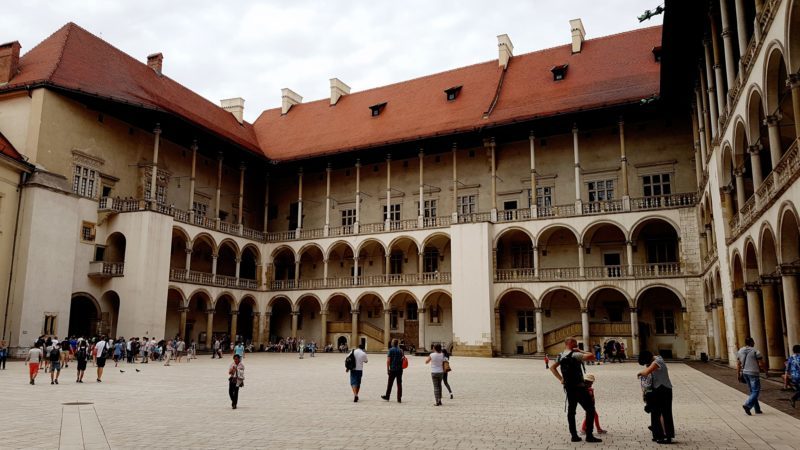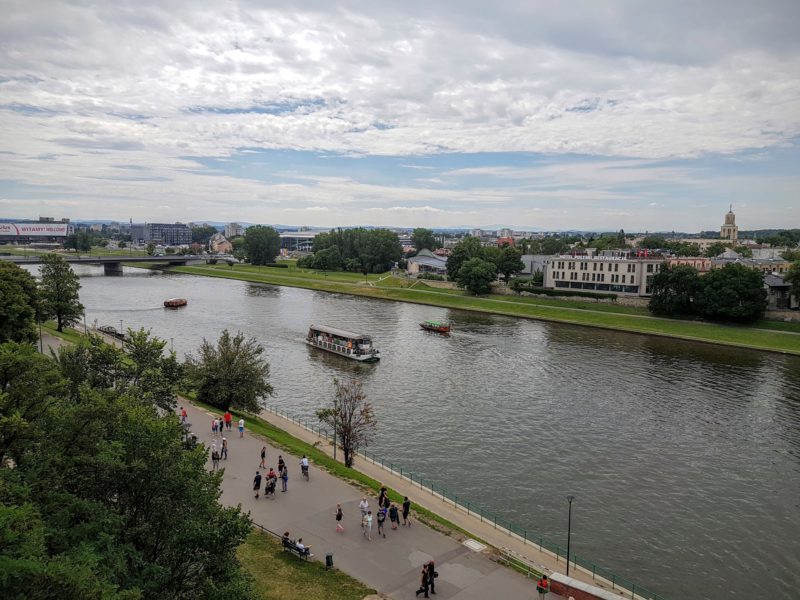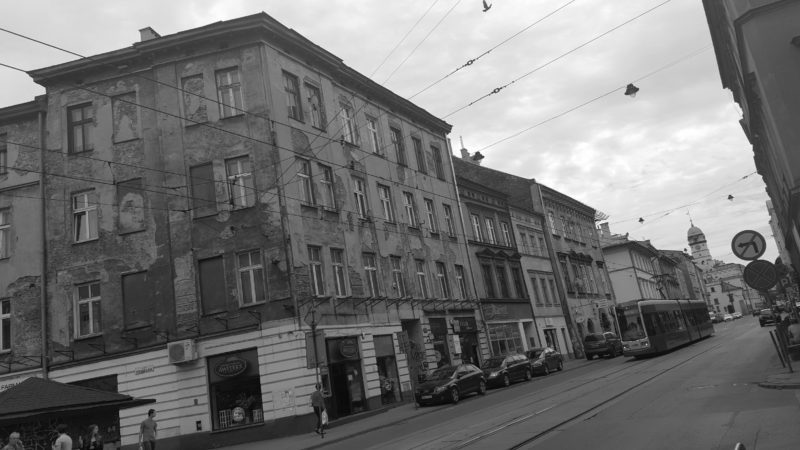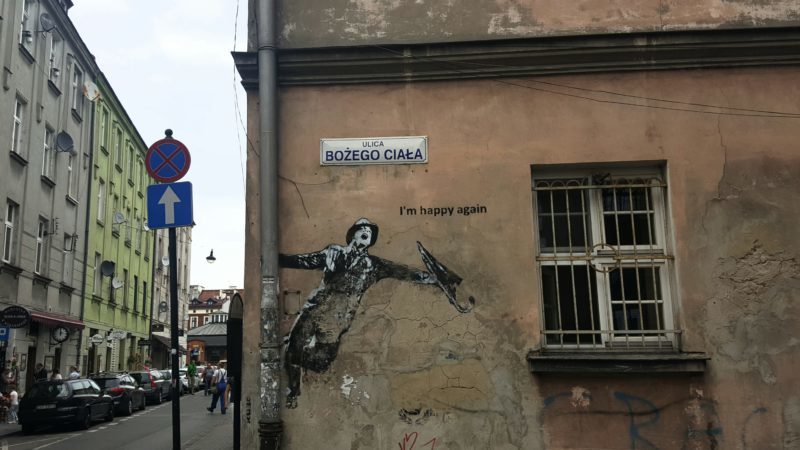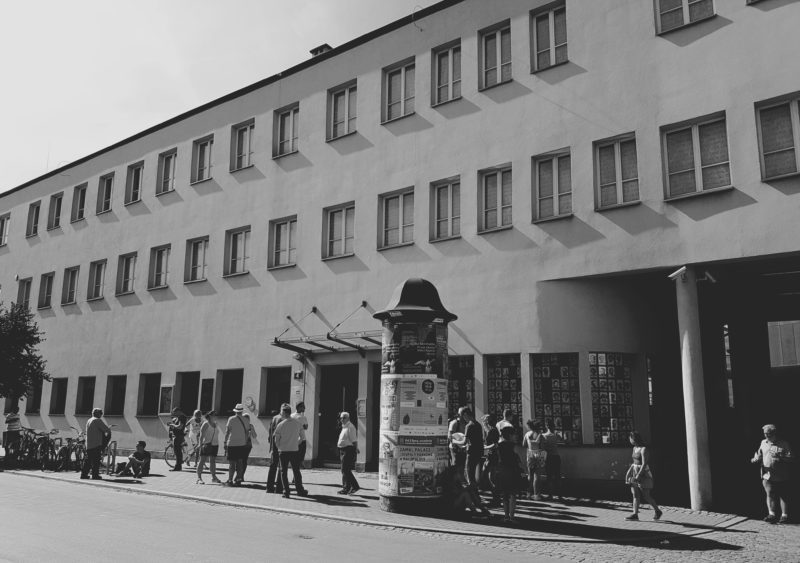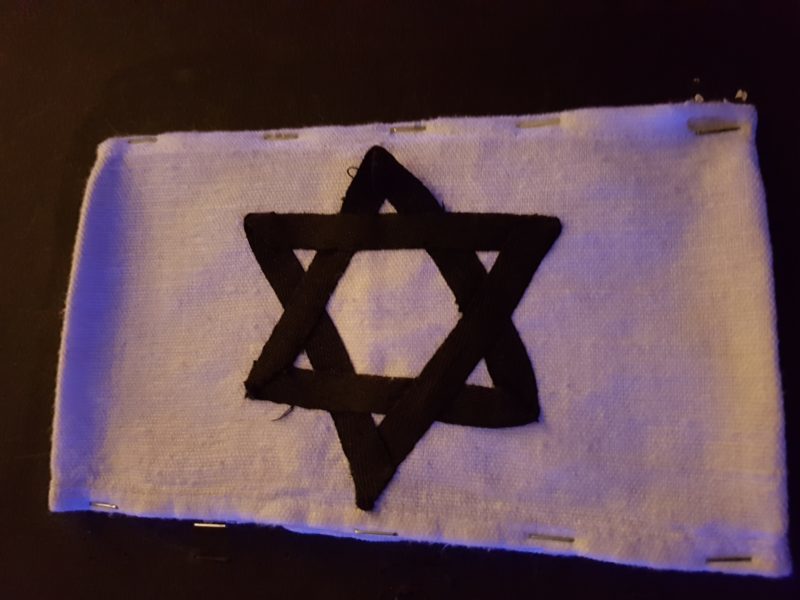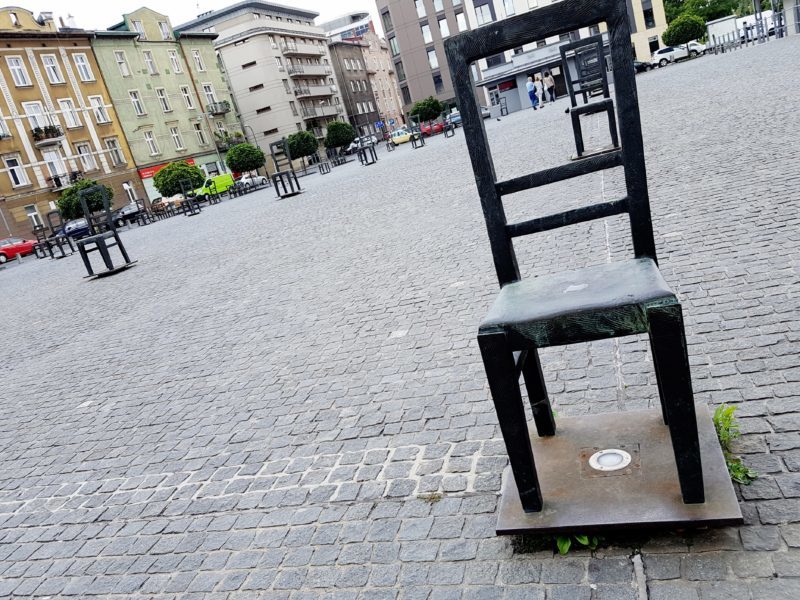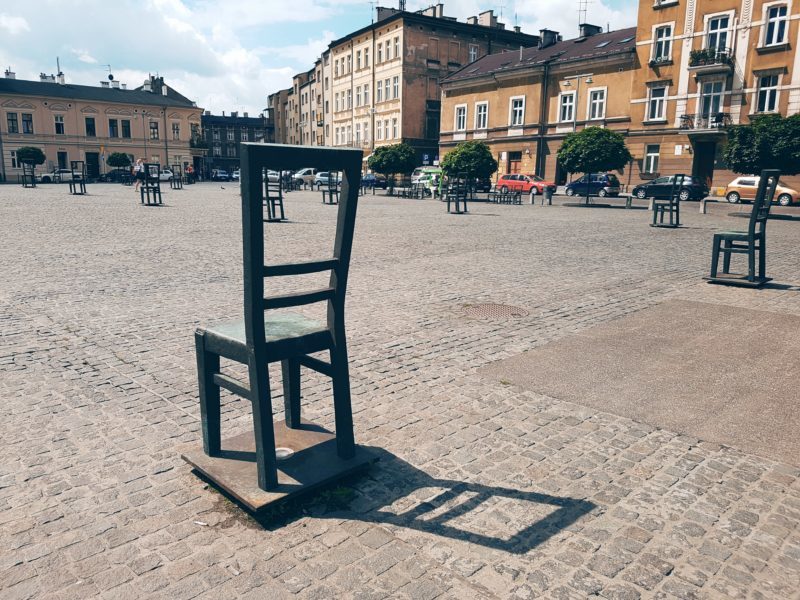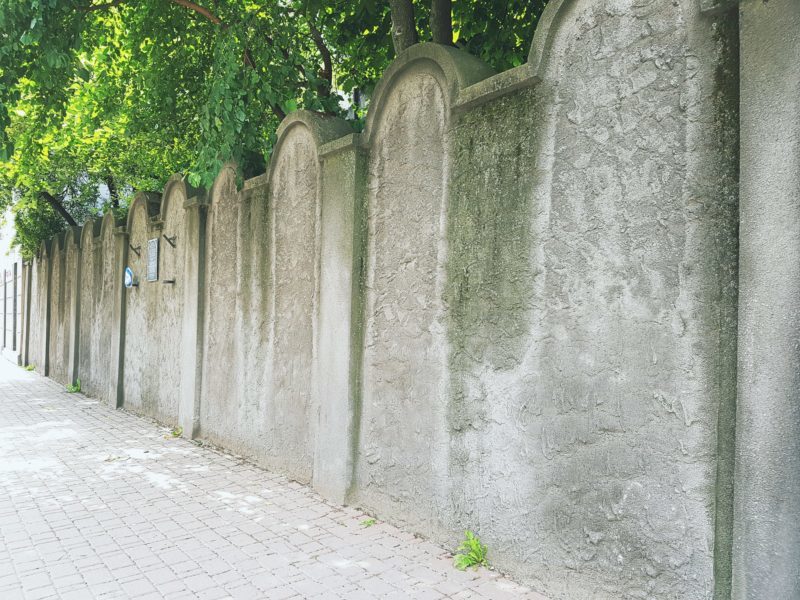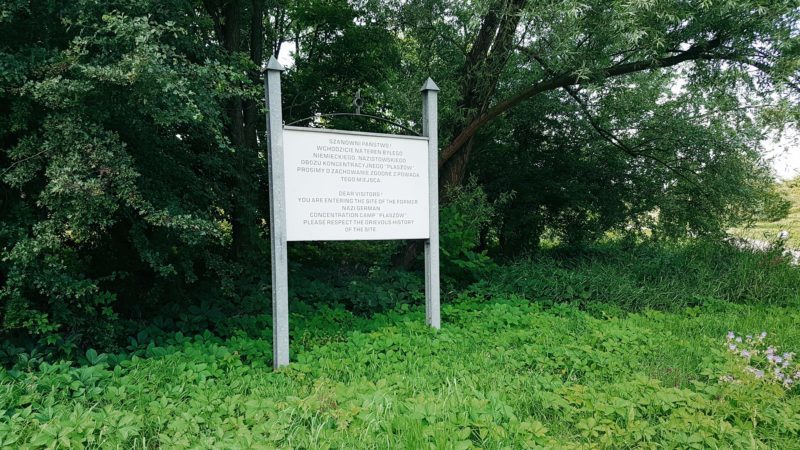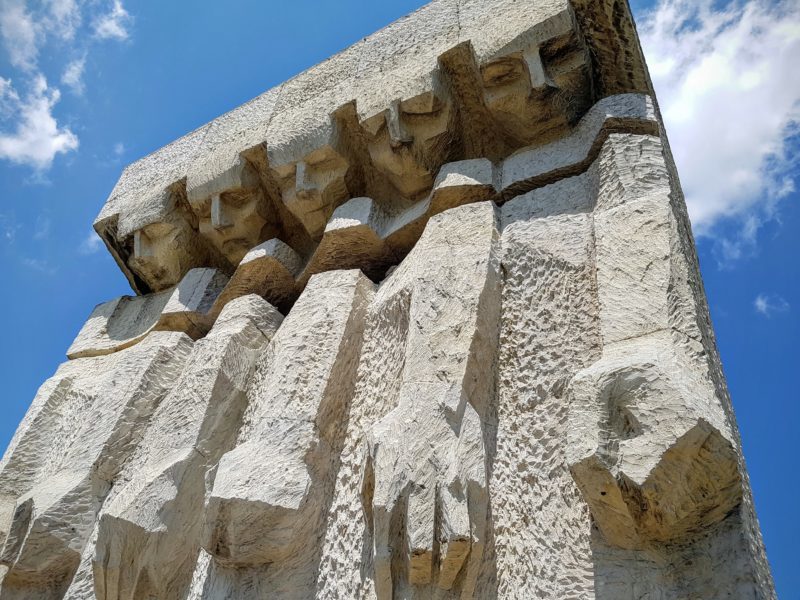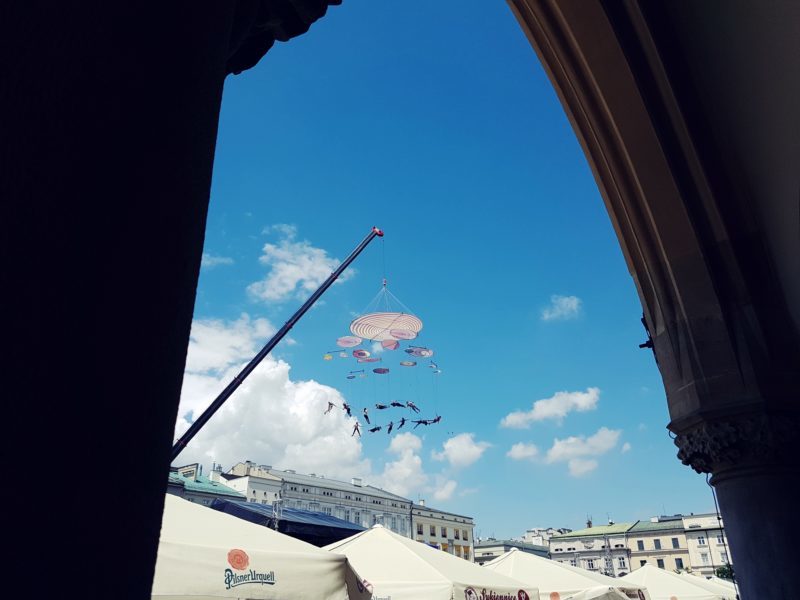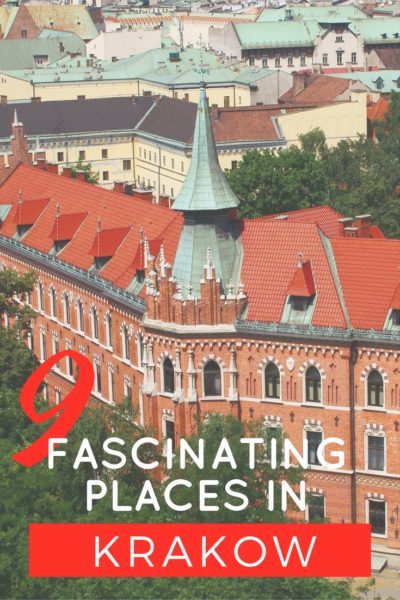Last updated: 15 July 2023
After starting our journey in Warsaw where we explored the Old Town and dined on pierogi, we headed north to the city of Gdansk to learn about its incredible history and how Solidarity changed the face of Europe.
From Gdansk we headed south to the wonderful city of Poznan where we explored its Old Town and watched Billy Goats butt heads with a mesmerised crowd. From Poznan, we boarded our train to our final stop on our great Polish rail adventure, Krakow.
What Should I See in Krakow?
Krakow is one of the most popular cities in Krakow with over 10 million visitors in 2015 and only increasing. There is more to do in Krakow than you’ve probably allowed time for so how do you choose what to spend your time on?
That’s a great question, and one that Roma and I asked ourselves when we first arrived in town. With our Lonely Planet in hand, a slew of travel blogs bookmarked, and chatting with everyone who would lend an ear, we formulated our Krakow itinerary.
If you’re planning a visit to Krakow, hopefully you can add some of the below to your travel plans and enjoy them as much as we did.
Here’s our top 9 most fascinating places in Krakow.
1. Stroll through the Old Town
The Old Town (Stare Miasto) in Krakow is unique when compared to Warsaw and Gdansk because the beautiful architecture, colourful buildings, and robust city walls are all original, spared the destruction of World War II.
The Old Town is universally recognised as one of the most important and beautiful places in all of Poland as it was one of the first sites to be chosen for the UNESCO World Heritage list.
Where to Start in the Old Town?
Start your walk at the edge of the Old Town at Florianska Gate (Florian’s Gate), the city walls, and the Barbican, located on Basztowa.
The imposing Florianska Gate, completed in 1307 and standing 35 metres tall was once part of the city’s defences which enclosed the city. The adjoining city walls are very impressive considering their age and at one time formed part of the 3km long defences, with 7 entrances into the city, all constructed over two centuries.
You can follow Florianska St in a straight line all the way from through the Old Town to Wawel Castle, ensuring you see most of the Old Town highlights. This path is also known as the Royal Route, the coronation path taken by the Polish Kings for over 200 years.
Rynek Glowny (Main Square)
How will you know when you’ve reached Rynek Glowny? Keep walking until you see the spires of St Mary’s Basilica church rise into view and you’ll know you’re heading in the right direction. If there’s any doubt then simply follow the crowds and you’ll get there…
Rynek Glowny is the main Old Town Square in Krakow. However, it shouldn’t be considered just another medieval square, it is the largest medieval market square in Europe. Surrounded by historic buildings and buzzing with people, both tourists and locals alike, around the clock.
The main town square is full of beautiful historic buildings, bustling tourists joining tour groups, the souvenir vendors moving their carts across the main square, and restaurant workers handing out lunch and dinner menus. It’s a place where history meets tourism.
St Mary’s Church
St Mary’s Church, also known as the Church of Our Lady Assumed into Heaven, stands 80 metres (252 ft) tall, and was originally constructed in the early 13th century (rebuilt in the 14th century).
The first thing that you notice about St Mary’s Church is that both towers are different heights. There could be a few different reasons for this but the one story you’ll hear most of the time includes two brothers, jealousy, murder, regret, and suicide…
The Legend of the Two Towers
The story goes that when the decision was made to add 2 towers to St Mary’s Church, two brothers were given the task. During construction, the older brother saw that his tower was much shorter and murdered his brother with a knife. However, on the day of the public dedication, the elder brother climbed the tower and using the same knife used to murder his brother, he stabbed himself in the heart and threw himself into the public below.
That very knife was chained to the side of the Cloth Hall to serve as a reminder of the perils of jealousy and pride.
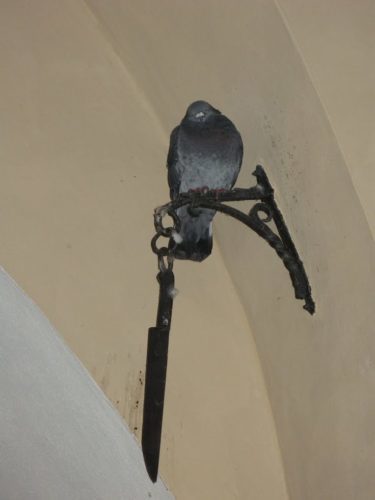
The Daily Bugle Call (Hejnal Mariacki)
One of the most fascinating parts of visiting St Mary’s Church is the Hejnal Mariacki; St Mary’s Dawn or Krakow Anthem. This traditional five-note Polish anthem is played by a trumpeter in the taller tower every hour on the hour. The trumpeter will play the anthem in 4 directions from the top of the tower, and if you’re standing just below him when he finishes the last then he’ll give you a wave hello.
The story behind the bugle call is just as remarkable as the fact that the midday bugle call is broadcast on the Polskie Radio across Poland! Now, the story behind the bugle call really does depend on who you speak to…
Accordingly to Wikipedia, the origin of the bugle call goes back to the 14th century when bugle calls were used to signal the opening and closing of the city gates and that it’s possible that the interrupted end to the bugle call was so that a second trumpeter at the gate could confirm when the gate was closed.
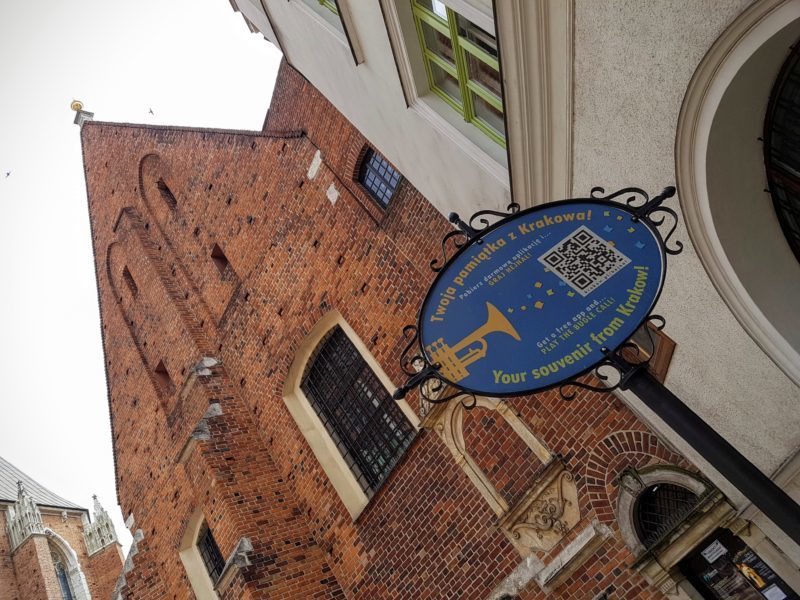
However, according to our city tour guide there was a different reason…probably more legend than fact but I really want to believe it. Our tour guide informed us that there during a Mongol invasion of Krakow, a guard on St Mary’s Church climbed the tower and played the Hejnal Mariacki to warn the townspeople but was shot by an arrow in the throat towards the end of the warning, hence the abrupt ending of the song.
In the end, does it really matter which one is truth and which is legend? Just marvel at the trumpeter, his notes, and that all of Poland listens.
2. Collegium Maius
The Collegium Maius, Jagiellonian University’s oldest building was originally constructed as its main campus over 600 years ago. Famous alumni include Nicolaus Copernicus and Pope John Paul II.
We visited during the peak of summer so the courtyard was pretty crowded with various walking tours all using the scenic location as a rest stop. Despite the crowds and the noise, it was worth visiting because it provided a unique glimpse into the historic academic halls.
3. Wawel Castle & Wawel Hill
After walking through the Old Town you will find yourself at the footsteps of one of the most iconic locations in all of Krakow, Wawel Hill.
A visit to Wawel Hill affords you the opportunity to explore some of the most historically important buildings in all of Krakow; Wawel Royal Castle and Wawel Cathedral.
Wawel Royal Castle
Wawel Castle is not a castle in the traditional sense, it’s a castle residence built for King Casimir III the Great (reigned from 1333-1370). The castle was the home to the Polish kings who ruled for generations and today remains a symbol of national pride. Home to one of Poland’s most important art museums which houses priceless works of art and historical exhibits.
Visitors today can explore the castle grounds, courtyard, state rooms, private apartments, and various exhibits.
Wawel Cathedral
Standing next to Wawel Royal Castle is the inspiring 900 year old Wawel Cathedral, a grand Roman Catholic church constructed in the 13th century. It is interesting to note that the current building is the third to stand in its location; the first was built and destroyed in 11th century, the second was constructed in the 12th century.
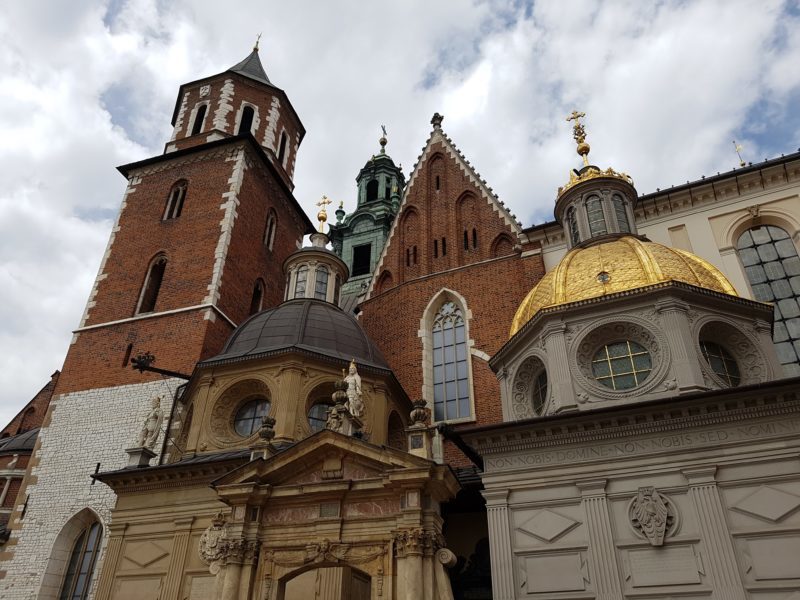
There is no entrance fee to the actual cathedral so make sure that you take a walk through and have a look around because it’s quite impressive.
Wawel Hill View
Once you finished exploring Wawel Royal Castle and the Cathedral, take a walk around the side of the hill and you’ll some some great vantage points to take some photos of the river and the cityscape.
4. The Jewish Quarter
The Jewish Quarter in Krakow, also known as Kazimierz, is located south of the Old Town between the bend in the River Vistula.
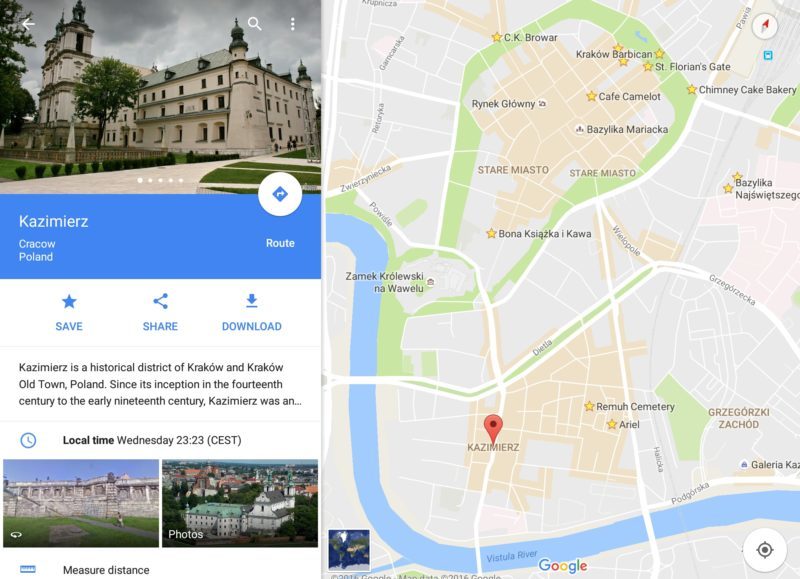
Kazimierz, now considered to be the Jewish cultural hub of Krakow which enjoys a vibrant and popular lifestyle with both locals and tourists, was once an area that people avoided in droves as it gained a reputation for dodgy dealings and subsequently fell into disrepair.
It was in 1993 when Steven Spielberg visited Kazimierz for the filming of Schindler’s List, which drew international interest. Following on from the international spotlight, Kazimierz has undergone development and has experienced a resurgence in Jewish culture, restaurants, bookstores, etc.
The best way to experience the Jewish district? Once you arrive in Kazimierz, pick a direction and go for a walk. There is something to see on every street.
5. Oskar Schindler’s Enamel Factory
It doesn’t matter if you’ve seen Schindler’s List, read the book Schindler’s Ark by Thomas Keneally, or if the name Oskar Schindler is new to you – a visit to the Oskar Schindler Factory is a must when visiting Krakow.
Like most of the world, I only learned the name Oskar Schindler when I watched Steven Spielberg’s Oscar-winning film back in 1993. It was a heart-wrenching film but one which has stayed with me. Given the opportunity to visit Oskar Schindler’s Enamel Factory, I jumped at the chance.
The site of the former enamel factory is located at 4 Lipowa Street and from the outside looks like a non-descript office building. If it wasn’t for the crowds of people outside or the old black and white photos stuck to the inside of an office, you could quite easily walk past it.
We purchased tickets to the main exhibit; Krakow Under Nazi Occupation 1939 – 1945. This was a phenomenal tour which took visitors chronologically through every aspect of World War II, from the start of the war, to the impact on the Polish population, the creation of the Jewish Ghettos, the Forced Labour and Extermination Camps, the end of the war, and its aftermath.
As you explore the museum you will come to a separate room, this was the original office of Oskar Schindler. The room has detailed information about his life, what he did before the war, his questionable motivations, and his most noble act of saving the lives of 1200 Jews. I found this to be one of the absolute highlights of our visit, and not just because we could stand in his office and see his desk, but there was obviously a great deal of time and effort exerted to inform visitors with all the relevant information.
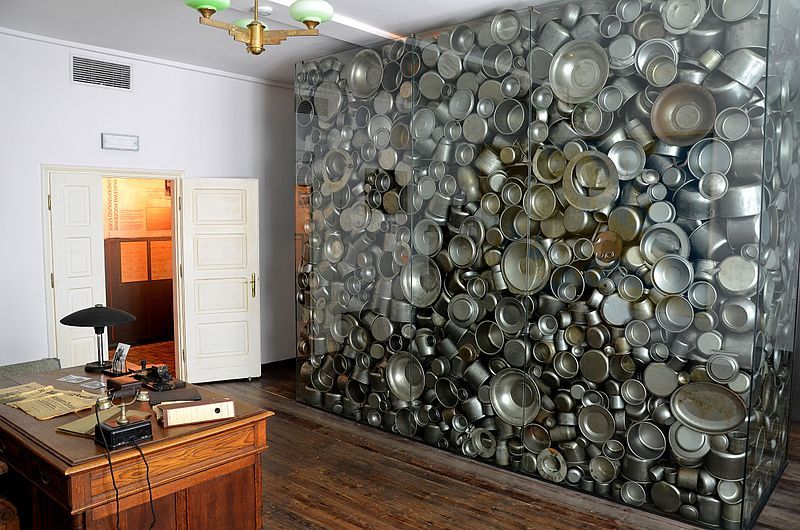
It is very important to note that there are only a limited number of tickets available per day so make sure that you don’t leave it too late when visiting. We arrived about 2pm and there were still 163 tickets available.
6. Krakow Ghetto & Deportation Monument
Not far from Oskar Schindler’s Enamel Factory is Ghetto Heroes Square (formerly Plac Zgody), the location where Jewish mass deportations took place. Men, women and children were taken from within the walls of the Krakow Ghetto to Plac Zgody, stripped of their belongings, and deported to extermination camps. Thousands upon thousands of Jews underwent this vile treatment, leaving in their wake, a public square littered with their possessions.
It was in 2005 when Ghetto Heroes Square was renovated and the memorial was unveiled. The memorial was created by Krakow architects Piotr Lewicki and Kazimierz Latak – a series of steel and cast iron chairs (33 large 1.4 metres chairs and 37 1.2 metre chairs) spread out across the length and breadth of the square.
Whilst there may have been some public controversy of the type of memorial, I can attest to feeling genuinely moved when looking out at those empty chairs. The architects have stated that they wanted portray that anyone could be a victim, I believe that they’ve achieved that perfectly.
7. Jewish Ghetto Wall
Situated just around the corner from the Krakow Ghetto & Deportation Monument stands a small section of the original Jewish Ghetto wall which housed 15,000 Jewish men, women, and children from March 3rd 1941 to March 14th 1943.
It’s no coincidence that the sections of the Ghetto Wall look like large tombstones. Today, these Ghetto walls serve as a constant reminder to all who visit, tourist or local, of what took place not only in Krakow but across Poland.
8. Plaszow – Former Nazi Extermination Camp
A short distance from the Krakow Ghetto & Deportation Monument and the Jewish Ghetto Walls, lay the remains of Plaszow, a former Nazi extermination camp.
The camp was originally designed to be a forced labour camp however after the liquidation of the Krakow Ghetto commenced in 1943, Plaszow became an extermination camp. If you want to learn more about Plaszow and its place in World War II history, Wikipedia contains some detailed information.
During our visit to Plaszow, we only saw one other group of visitors and this was during the height of summer so I assume that the former camp is not highly visited. That’s actually a good thing because you can try to mentally prepare yourself for walking through the site.
Absolutely nothing remains of the former camp, there are a couple of memorials and a grand solemn statue but the rest is all parkland. On one hand, it feels like there should be more on this site but perhaps its current status as a nature reserve is more than enough.
9. Krakow City / Old Town
After spending the afternoon revisiting the wounds of World War II, the best way to appreciate just how much Krakow has to offer is to head back into the Old Town, pick a small cafe, and order a Zywiec or a Tyskie, and appreciate the view.
We did just that and what did we see? Aerial acrobats!
Final Thoughts
While the city of Krakow has its fair share of war wounds, your experience there can be as deep and dark or as light as you want it to be. A popular destination for stag parties, the city can feel like a bustling metropolis on weekends.
Nearby the city is the site of the most well-known extermination camp, Auschwitz. We didn’t visit Auschwitz on this occasion but many visitors come to Krakow simply to make the trip. There is more to Krakow than you might first think but if you scratch beneath the surface you’ll easily find it.
There’s always something to see in Krakow. There’s always something to learn in Krakow. What are you waiting for? Krakow is waiting for you.
